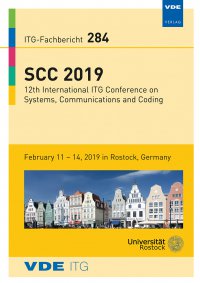Crest-Factor Reduction for Responsive Communications Jammers
Konferenz: SCC 2019 - 12th International ITG Conference on Systems, Communications and Coding
11.02.2019 - 14.02.2019 in Rostock, Germany
doi:10.30420/454862017
Tagungsband: SCC 2019
Seiten: 6Sprache: EnglischTyp: PDF
Persönliche VDE-Mitglieder erhalten auf diesen Artikel 10% Rabatt
Autoren:
Mietzner, Jan (Hamburg University of Applied Sciences, Faculty of Design, Media, and Information, 22081 Hamburg, Germany)
Inhalt:
Responsive jammers comprise both a receiver and a transmitter branch and are thus able to react to upcoming communications signals rather than jamming entire frequency bands in a continuous fashion. In this paper, we consider a responsive jammer which reacts to a number of narrow-band communications signals found within a certain bandwidth, by transmitting a corresponding set of carrier-wave (CW) signals at the observed communications frequencies. This gives rise to a general multicarrier transmission signal, since the resulting frequency spacings are basically random and related to the observed communications activity. As a drawback, multicarrier signals are generally known to be characterized by poor Crest factors (or peak-to-average-power ratios, PAPRs). This typically requires a corresponding power back-off at the transmitter, in order to avoid clipping by the subsequent power amplifier (PA). In this paper, Crest factor (CF) reduction by means of optimal CW phasing is considered, so as to reduce the required power back-off and thus enhance the effective jamming range. After inspecting the resulting problem setup and revisiting the related literature, we devise a (sub-optimal) gradient-based projection algorithm in order to find near-optimal phase values. Numerical performance results show that the CF can be reduced considerably in many cases. Yet, there are also unfavorable CW constellations, for which only minor gains can be attained even with a brute-force search.


